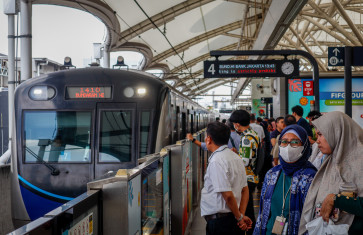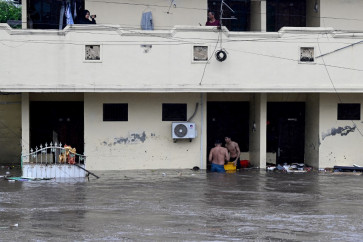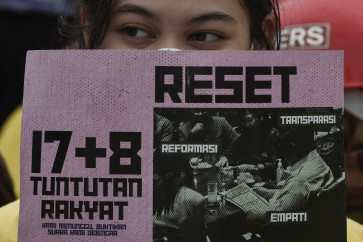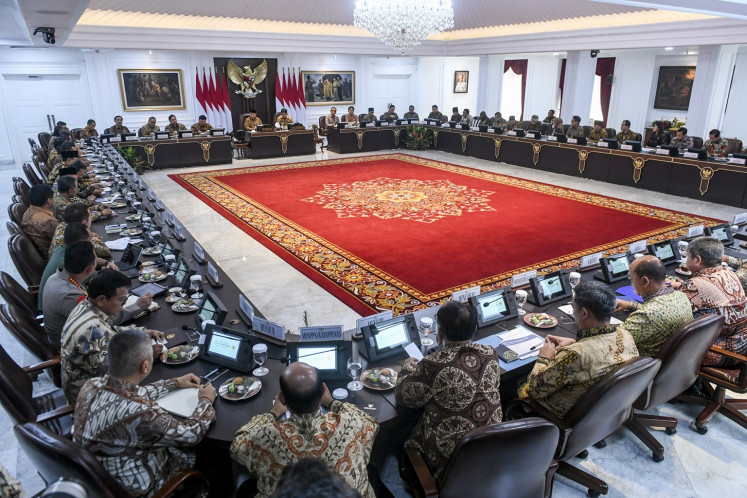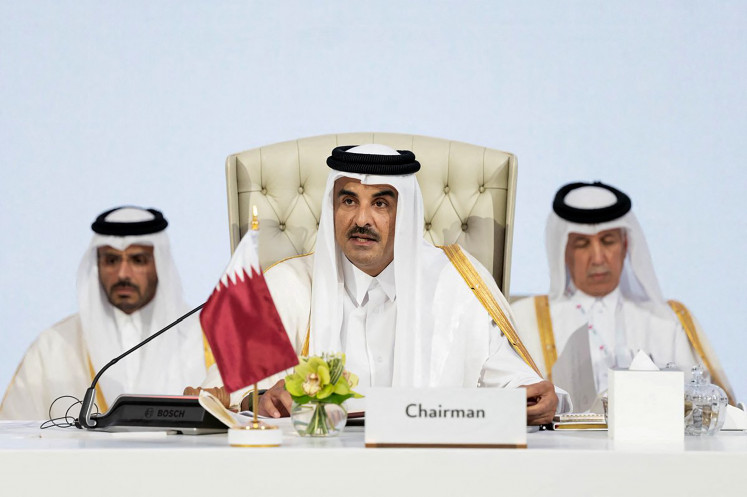Popular Reads
Top Results
Can't find what you're looking for?
View all search resultsPopular Reads
Top Results
Can't find what you're looking for?
View all search resultsSavor Pakistan: Ramadan delicacies
Ramadan is here and Muslims around the world are celebrating the holy month cheerfully with a blend of Islamic teachings and local traditions
Change text size
Gift Premium Articles
to Anyone
R
amadan is here and Muslims around the world are celebrating the holy month cheerfully with a blend of Islamic teachings and local traditions. Muslims in Pakistan are no exception.
Pakistan — officially known as the Islamic Republic of Pakistan — is among the countries which still have a strong tradition that is particularly visible during the fasting month.
For Pakistanis, Ramadan is not just a time to fast and to improve the quality of their religious spirit by going to the mosque and reciting the Koran.
In the holy month, Pakistanis prepare special delicacies and share them with relatives.
“We have special food for sahur [the pre-dawn meal] and ifthar [the evening meal for breaking the fast].
For sahur, we usually eat paratha bread with curry and omelets, while the drinks are usually yogurt or tea,” said Sanaullah, the Pakistani Ambassador to Indonesia.
Pakistani people usually send as much food as possible to mosques to be shared with other people for the meals for breaking the fasts. Usually, people choose dates as the first thing to eat.
A cocktail-like beverage is traditionally made using a variety of fruit available at local markets. People usually take mangoes, oranges and guavas and cut them into small pieces before adding lemon juice.
“It’s a sweet and sour concoction. It’s like a fruit cocktail,” he said.
A few snacks often found during Ramadan are pakora and kachori. Pakora are created by taking one or two ingredients such as onions, eggplant, potatoes, spinach, cauliflower, tomatoes, chili, or occasionally bread or chicken, and dipping them in a flour batter before deep-frying.
The most popular varieties are palak pakora, made from spinach, paneer pakora, made from paneer (soft cheese), pyaz pakora, made from onions, and aloo pakora, made from potato.
Kachori is a spicy snack, a round, flattened ball made of fine flour filled with a baked mixture of yellow moong dal or urad dal (crushed and washed horse beans), besan (crushed and washed gram flour), black pepper, red chili powder, salt and other spices.
“Pakora is cheaper than kachori, because the former is more for the poor and lower classes and the latter is for the middle and upper classes. Regardless of social class, everyone usually has pakora for breakfast at homes. It is inconceivable to break the fast without pakora,” Sanaullah said.
For those with a sweet tooth, there is jalaibee, a fried paste-like snack made from white flour mixed with baking powder and dipped into a sugar extract for a few minutes.
“Jalaibee is sweet and very good nourishment after a day of fasting,” Sanaullah said.
He said that snacks were the most common thing found across Pakistan for breaking the fast, while main dishes might differ from home to home. Sanaullah, who likes to cook Pakistani cuisine, said that he usually cooked vegetables. But since his son did not like eating green things, he also cooked biryani rice and chicken dishes, such as chicken masala and chicken curry, alongside the vegetables.
“To get a real Pakistani flavor, you should use handi, a round shaped clay pot, and tightly close it,” he said.
Sanaullah said that the cuisines of Pakistan and India had many similarities because they shared the same basic ingredients and spices and the fact that the countries only separated after Pakistan gained its independence on Aug. 14, 1947. However, he added, Pakistan cuisines follow Muslim dietary guidelines, and do not contain pork or alcohol.
He said that in the fasting month, restaurants and eateries were closed during the day. This would be an uncomfortable situation for someone living alone in a big city. Sanaullah said that if people who were not fasting happened to be in Pakistan during the month, they could go to railway stations or airports for those places had restaurants that remained open to serve tourists.
If you are in Jakarta, there are several Pakistani restaurants to try across the city. One famous Pakistani restaurant is Koh-ee-noor in Pasar Festival Kuningan, where The Jakarta Post tried samosa (a tetrahedral-shaped pastry filled with onions, potato, lentils and coriander), chicken biryani rice and chicken curry. While Pakistani cuisine resembles the Indian cuisines, the taste is slightly different and has more delicate flavors.
Another Pakistani delight is the chaunsa mango, a juicy fiberless sweet mango that is usually harvested in August.


